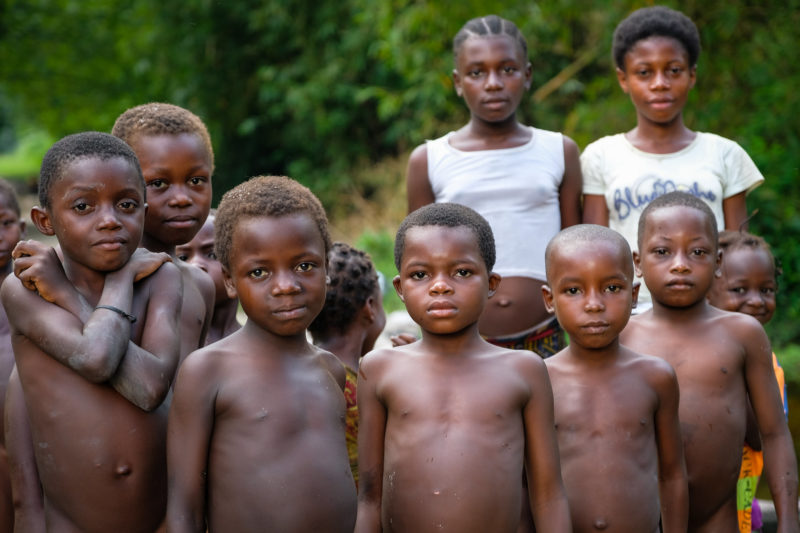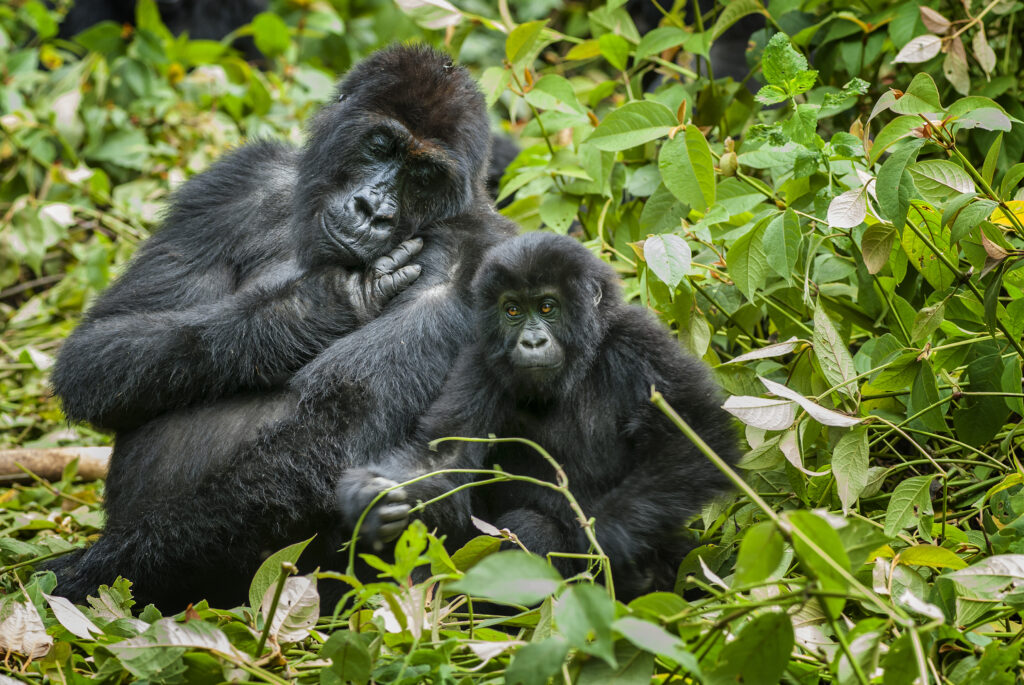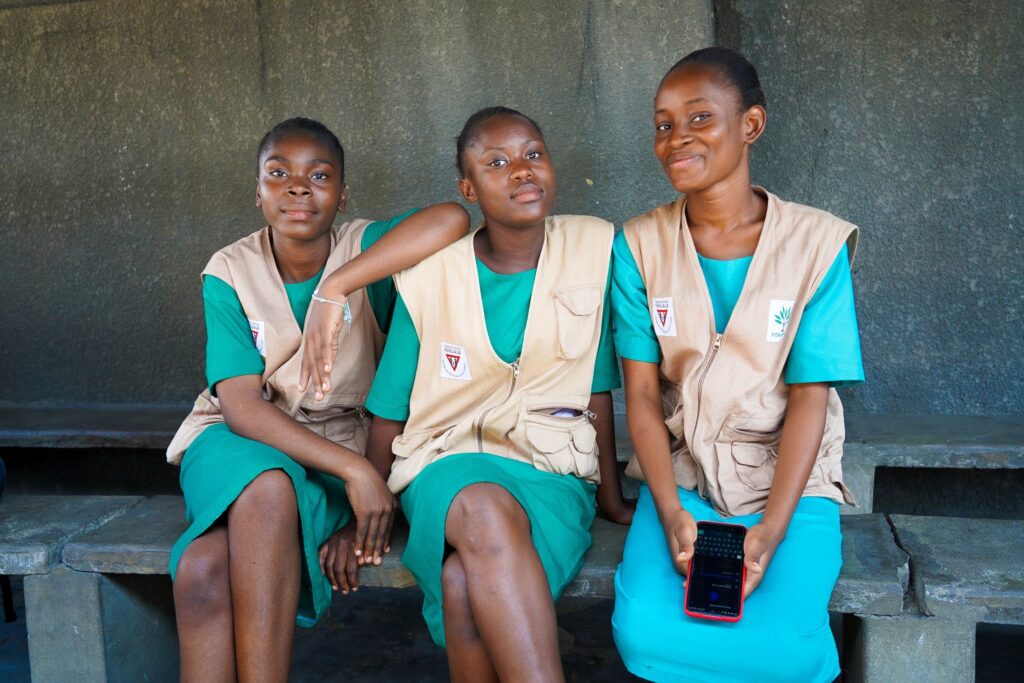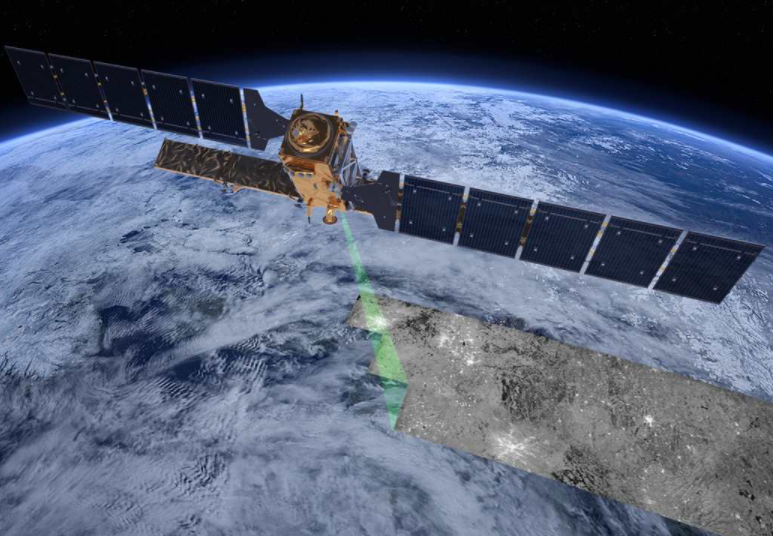
The Congo Basin
In the heart of Africa lies the second largest rainforest in the world, the Congo Basin rainforest. Enclosing the mighty Congo river system, it is teeming with unique animals and plant species. Protecting these forests is vital in order to prevent global warming.
Vital Importance to Climate, People and Nature
The Central African forests are of vital importance in order to meet the goals of the Paris Climate agreement.
Equally important are large amounts of peatlands. These carbon-rich, thick layers of organic soil have accumulated over millions of years in the whole region.
A continuous peatland the size of UK has been discovered in The Congo River basin between DR Congo and the Republic of Congo. This peatland stores an estimated amount of 30 gigaton of C02 – roughly the same as the global energy sector emits yearly. This rainforest also generates humid air which translates into rainfall benefitting the entire region and beyond.
The deforestation of this rainforest and the resulting lack of rainfall is a major concern on a continent with huge deserts like the Sahara and recurring droughts in the dry savannas of the Sahel.
The potential consequences for food production, social and political stability and on migration can be dramatic.
The lifeline of millions
The Congo Basin rainforest is enormous. It stretches over six central African countries along the Equator.

The Congo Basin Forest is the size of India or almost ten times the size of Germany, covering 3.3 million km2. Almost two thirds of the forest is within DR Congo. It provides food, firewood, water and shade.
Spectacular biodiversity
In the Congo Basin forest, you can find some of the most spectacular animals on the planet. The lowland gorillas, bonobos (pygmy chimpanzees), forest elephants, okapi – the forest giraffe – and the magnificent Congolese peacock.
There are an overwhelming 10.000 species of plants, including 3.000 that are found only here: 600 tree species, 1000 bird species, 900 species of butterflies, 280 species of reptiles and 400 species of mammals.

Deforestation
Deforestation in the Congo Basin is changing rapidly. In 2022, a tree-covered area of 15 603 km2 was lost, according to recent satellite data. This amounts to almost 8 000 football fields of forest cleared every single day. Most of it occurred in DR Congo.
Why does the forest disappear?
In DR Congo, deforestation is mostly caused by a growing population trying to cover their basic, daily needs for food and charcoal.
For the region as a whole, a study by Maryland University shows that the small-scale slash-and-burn agriculture accounts for 84 percent of the deforestation, while logging accounts for about 10 percent.
Finally, in some areas of the Congo Basin, mining is also an important driver of deforestation.
Global Demand for Natural Resources
Most of the Central African countries depend heavily on the vast natural resources in the region for their income.
The Republic of Congo and Gabon are oil nations. DR Congo depends on income from minerals. The global market is craving copper, coltan and cobalt to produce everything from smartphones to batteries in electric vehicles, all part of the green economy.
Nonetheless, people in the region face poverty, inequality and food insecurity.
Weaknesses in governance, institutions and infrastructure make it difficult to successfully address these challenges.
Fighting deforestation
Protecting the forests, peatlands and the biological diversity poses enormous challenges.
To succeed in preventing deforestation in Central Africa, there is a need for better forest governance and massive efforts to invest in poverty alleviation, rights-based family planning, especially in DRC, and people- and forest friendly sustainable development with deforestation-free value chains that offer jobs and revenues while preserving the forest.
National goals
All the countries in the Congo Basin generally aim at stabilizing their natural forest cover. DR Congo has committed to do so by 2030. Gabon has committed to preserve 98% of its current forest cover. However, these commitments will be difficult to honour, without support from the outside world.
Norway’s climate and forest partnership with CAFI
CAFI (Central African Forest Initiative) is a regional multi-donor initiative aiming to reduce deforestation and forest degradation and ensuring sustainable development in the Congo Basin.
In 2015 six Central African countries – Cameroon, the Central African Republic, the Democratic Republic of the Congo (DR Congo), Equatorial Guinea, Gabon and the Republic of Congo – teamed up with a group of donors to protect the Congo Basin rainforests. The joint initiative was named The Central African Forest Initiative (CAFI), and it is the largest international collaboration to protect the Congo Basin.
Its goal is to preserve the value of the forests in the region, to mitigate climate change, reduce poverty and ensure a sustainable development. The donor group has gradually expanded and now consists of Belgium, Denmark, The European Union, France, Germany, the Netherlands, Norway, the Republic of Korea, Sweden, the United Kingdom, and the United States.
The CAFI partnership
CAFI is financing programs to address drivers of deforestation and promote sustainable development. CAFI supports key reforms on land use planning, sustainable agriculture and forest management, energy, demographic transition, governance, and land tenure, as well as support to civil society and indigenous peoples. CAFI is also planning to support measure to reduce the negative impact on forests of mining and oil exploitation. The programs are based on national investments plans.
The Norwegian funding is channelled through the CAFI Trust Fund. The fund is managed by the UN in New York. The World Bank, UN agencies bilateral cooperation agencies and international NGOs (based on risk assessments) implement the programs. No funding is transferred through government accounts.
Norway has during 2015-2024 disbursed around 3 778 million NOK to CAFI.
Results
The Norwegian support has contributed to the development of national REDD+-strategies and ambitious investment plans in Gabon, Republic of Congo and DRC. Gabon was the first country in Africa to receive results payments for preserved rainforests.
In DRC, the Norwegian support has contributed to several results:
- A national REDD-fund hosted by the Ministry of Finance.
- A national land use policy and law, national land tenure policy, energy policy and agricultural policy taking forest preservation into account.
- 9.7 million hectares of rural land in the DRC are now under a validated land use plan.
- Over 592,000 hectares of local community forestry concessions have been established with titles, benefiting 1,048,501 people.
- Investments in agroforestry, assisted natural regeneration and sustainable agriculture in provinces with high deforestation covering close to 35,000 hectares.
- Improved agricultural revenues through 22,321 hectares of pilot perennial crops (cocoa, coconut, coffee, oil palm and fruit trees) planted in savannah zones and degraded forests.
- Close to 35 000 hectares of subsistence food crops, often intercropped with wood energy plantations. Wood energy plantations provide sustainable wood energy and replace unsustainable fuel wood and charcoal. This complement investments in improved cookstoves and alternative cooking energy.
- Support to demographic transition through rights-based family planning. In 2022, CAFI-supported family planning represented 41% of total national family planning services. This has reached to 3,193,965 direct beneficiaries of contraceptive methods including 435,441 beneficiaries of long acting contraceptive methods in 11 provinces.
 Photo: Marte Lid/Norad
Photo: Marte Lid/Norad
- Forested area: 2,8 million km2 (Global Forest Watch, 2020)
- Biodiversity: Unique biodiversity with 3000 endemic species only found in Central Africa, including primates, the okapi or the forest elephant.
- There are huge differences between the countries in the Congo Basin, both in terms of size, population and economy. The smallest country, Equatorial Guinea, is roughly the size of Albania, with 1.7 million people and an annual GDP of 18 360 dollars per capita. The largest, DR Congo, is half the geographical size of the European Union, and has a population of almost 100 million. Here, annual GDP is 1510 US dollars a year per capita- on average four dollars a day.


